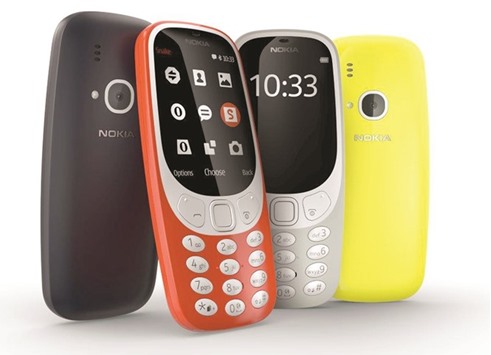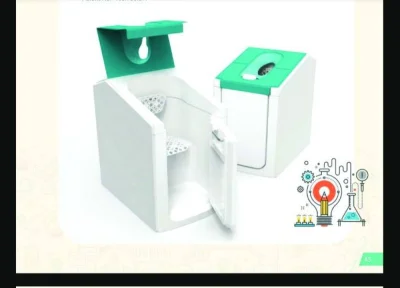The 2017 edition of the Mobile World Conference (MWC) has brought with itself an indication of where mobile devices are going this year. From the return of a beloved icon to 4K displays to minimum screen bezels – this year’s crop of smartphones seems to be ticking all the right boxes. I would even go as far as to say that this may very well turn out to be the most exciting year for mobile innovation since VR first hit the Samsung Note 4 in 2014 – two years is eons in terms of technology.
Samsung opted not to unveil the successor to its Galaxy S7, but other manufacturers picked up the slack. Following is a roundup of some of the more notable announcements at the MWC this year.
LG
LG unveiled the G6, successor to the innovative but unsuccessful G5. LG has gotten rid of the G5’s modular design and has focused on what made some of its earlier phones so very compelling – minimum bezels. The G6 has what LG touts as FullVision display with a QuadHD+ resolution of 2880x1440. All you need to take away that is that the screen is much bigger than that on the G5 – it has grown from 5.3 inches on the G5 to 5.7 inches on the G6 in a body that is almost as big. LG has achieved this by a combination of reducing bezels all around the screen so that more of it fits in the same body and by changing the aspect ratio of the screen from 16:9 to 18:9 (so the screen will be longer than what you are used to). The company has also improved on its dual camera setup, with both cameras on the back now offering identical 13MP resolution with OIS. It also brings with it a bunch of software features designed to take user of the unique aspect ratio, which lets the screen be divided into two identical squares.
But LG G6 will not be the ultimate phone of 2017, as it is missing a number of features that LG could have and arguably should have made available on its latest flagship. The battery (sealed this time) is much bigger than G5 at 3300mAH, but it is also powering a bigger screen. G5 wasn’t exactly a battery stamina champion, and going by the numbers G6 will should be better, but not by much. Frankly speaking, a bigger battery in a marginally thicker shell would have been preferable. Then there’s the absence of 4K screen resolution. QuadHD displays are well and nice in everyday use (even FullHD displays are more than adequate) but phones with 4K resolution will be a significant advantage in VR. Also baffling is LG’s decision to keep the excellent Quad DAC audio chipset from its V20 exclusive to Korea. The use of an older chipset for the phone (Snapdragon 821 in this case, same as Google Pixel), can be forgiven somewhat as it would have delayed the launch of the phone by many months. But specification junkies will nevertheless be let down.
Sony
Sony may not have done much with the world’s first-ever 4K screen phone, the Xperia Z5 Premium, but it may very well have the chance to correct that with the Xperia XZ Premium. Going by industry rumours, the Galaxy S8 range will also skip 4K displays like the G6, giving Sony the sole 4K phone in the market. The use of the latest Snapdragon 835 chipset will push the launch back to May or even later, but the wait may very well be worth it if Sony can make good on the VR promise that the 4K screen on this phone holds. The phone houses a battery that is almost the same size as the LG G6 though, which may be cause for concern. We will just have to see what kind of optimisations Sony has done.
Also worth noting is the Motion Eye camera that Sony is bringing to its latest flagship phones – the Xperia XZ Premium and Xperia XZs. The resolution of the camera drops from 23MP in previous phones to 19MP in the current gen. But as well all know by now, resolution is hardly an indicator of the quality of the camera. Expect the usual generational improvements, but what is really notable about this camera is the super slow-mo mode – the camera is capable of recording video at a whopping 960 frames per second. This is four times as fast as any other phone on the market and makes for some of the most dramatic slow motion footage that smartphones can currently capture. There are some serious limitations, of course. The slow motion only works for 0.18 seconds of a video, so while you will be able to capture some cool moments in spurts, you cannot capture the entire video in 960 frames per second.
Nokia
After selling its mobile division to Microsoft in 2014, Nokia is back with the unveiling of four new phones at the MWC. This time a newly-formed Finnish company, HMD Global, has acquired the rights to sell Nokia-branded phones and tablets with a licensing agreement with Nokia itself.
The company seems to be dipping its toes in the Android world rather than diving in, with the announcement of three entry-mid level smartphones. People interested in a high end Nokia device will simply have to wait a while.
The headlining element of Nokia’s return has to be the refresh of the 3310, an iconic phone that has reached the status by being virtually indestructible. But this refresh brings with it some welcome upgrades. The phone has now acquired a 2.4-inch colour screen, a 2MP camera, a 3.5mm headphone jack and a tweaked design. But that’s about it. No 3G, no Wi-Fi. The expandable storage does let you add 32gb of microSD card to the phone and use it as an MP3 player. Expect the price to be somewhere around QR200.
The other three phones, Nokia 6, 5 and 3 are all Android-powered smartphones. The Nokia 6 is the most notable of the three, with a big 5.5 inch FullHD screen, 3gb RAM, 32gb expandable storage, and 16mp camera. One would have hoped that Nokia would have used a faster chipset than the entry-mid level Snapdragon 430, but the chipset benchmarks well enough to be smooth sailor in daily usage. One downside of the chipset is that video recording on the phone is restricted to 1080p. Expect the price to be around QR900. The phone will also come in an Arte Black edition, with costs more and has 64gb of internal storage and 4gb RAM.
The Nokia 5 is also powered by Snapdragon 430, but has a 5.2 inch screen of 720p resolution, 2gb RAM, 16gb expandable storage and a 13mp camera. The Nokia 3 will have a 5-inch screen of 720p screen resolution, 2gb RAM, 16 expandable storage, 8mp camera and will be powered by a quad core MediaTek chipset.
Oppo
Chinese manufacturer Oppo announced a technology that puts 5X lossless zoom on a smartphone without any camera bump. Called the 5x Dual Camera Zoom, Oppo was showing the technology off at MWC in a prototype device. The company is dubbing the technology as the world’s first periscope-style dual-camera technology for smartphones. Everyone who experienced the technology first hand came off impressed. Everyone who tried the prototype device at MWC came away impressed – it holds remarkable promise for smartphone photography in future.
Huawei
Huawei unveiled its P10 and P10 Plus flagship phones at the MWC. The P10 has a 5.1 inch FullHD screen, while the plus edition has a 5.5 inch screen of QHD resolution. Both are powered by Huawei’s powerful inhouse Kirin 960 chipset and feature the latest of Huawei’s Leica-branded dual camera module. The setup is the same as Mate 9 – a 12MP colour sensor with OIS and a 20MP monochrome sensor. You can expect the same set of features you have come to expect from recent Huawei flagships – excellent all-round performance and bokeh effects. This time around though, the front camera is also powered by Leica. These are true flagship phones, offering all the features you would expect of a 2017 flagship phone and will also be priced accordingly.
* The author may be contacted at [email protected]
or followed on Twitter at @tknobeat

The Nokia 3310 makes a comeback.


